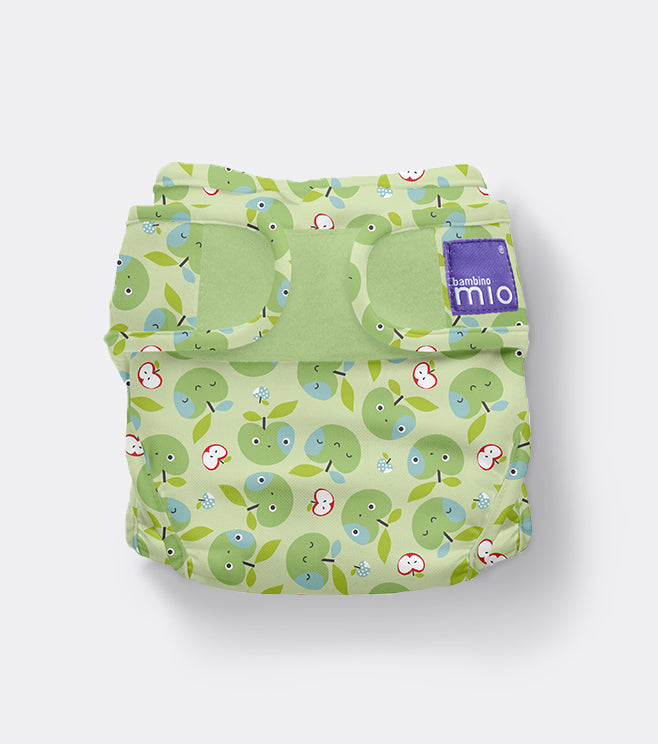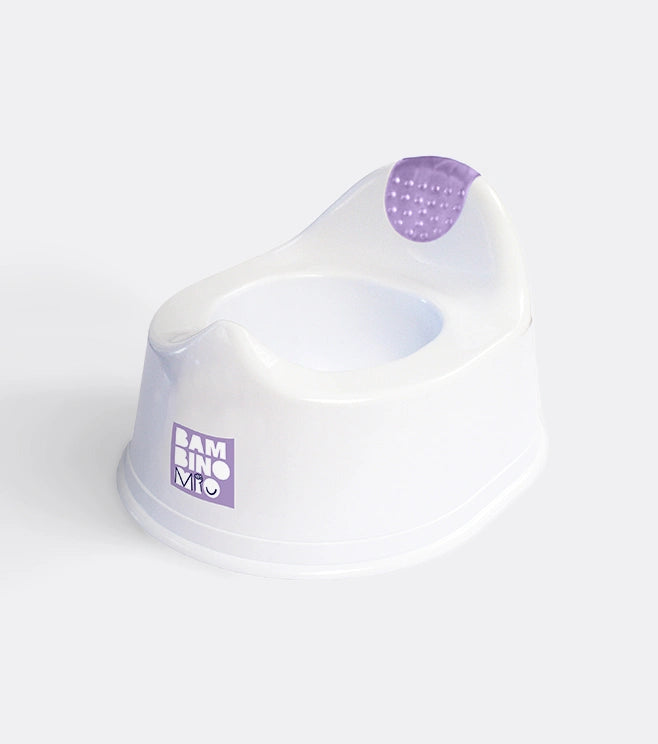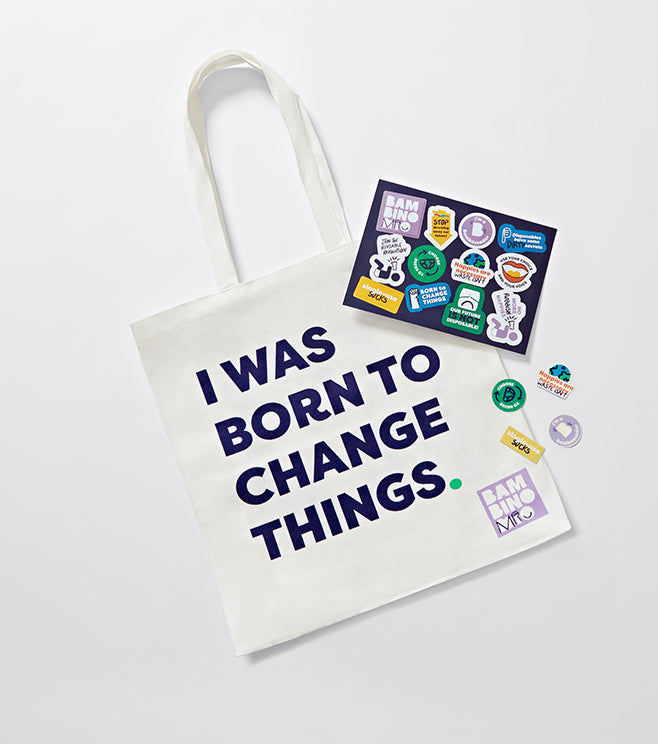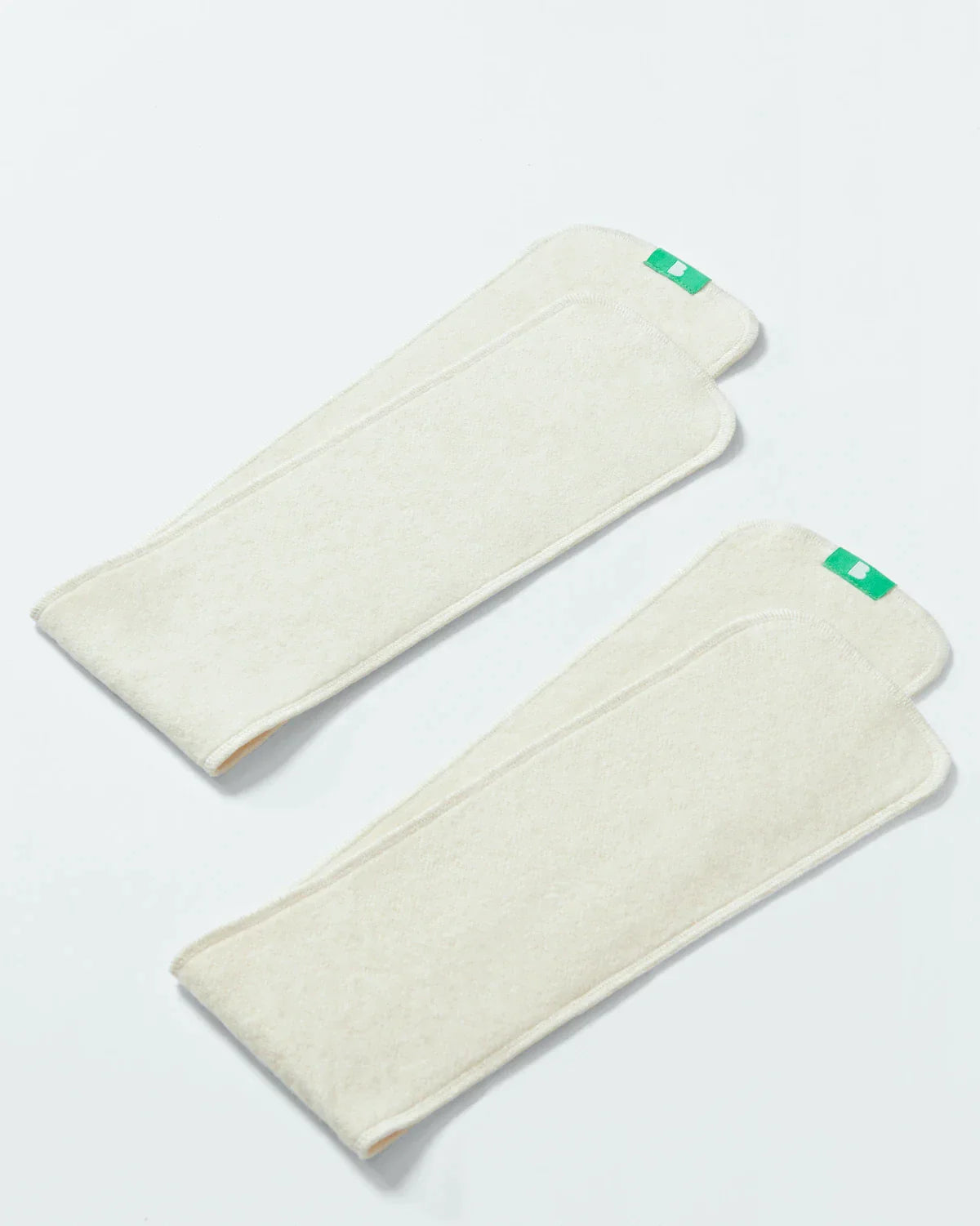Due Date Calculator: How Many Weeks Pregnant Am I?
Share Options
- Bambino Mio
- 28 / 08 / 2023

Inside this Article:
- Estimated Due Date
- How many weeks pregnant am I?
- How does a estimated due date work?
- Using a estimated due date: step by step guide
- Factors affecting due date accuracy
- Determining your conception date
- How far pregnant am I? 2 other ways to calculate pregnancy
- What if you go past your due date?
- Calculating due dates FAQs
A estimated due date tells you how pregnant you are. Track your journey with confidence using our pregnancy calculator to work out when your baby will be born.
Estimated Due Date
Understanding due dates
Your due date is very important for you and your healthcare team as it determines the course of your prenatal care (1), including prenatal tests and nurse-midwife appointments.
Knowing your due date is also important on a personal level, because it helps you to plan ahead and get everything you need in place for your baby and for your new life as a parent.
What is a due date?
A due date, in pregnancy, is the date the baby is expected to be born. Also known as the estimated due date (EDD), your prenatal team will calculate this timing from the date of the first day of your last menstrual period (LMP) (2).
The first day of a period is a definite point in time which gives your doctor, you and our calculator something to work from.
For example, if your last period started on January 1, your EDD would be October 8.
How long pregnancy lasts (3) is around 40 weeks, or 280 days , so by using your LMP as a starting point, you can work out when the baby might arrive.
How many weeks pregnant am I?
To work out how many weeks pregnant you are, count the first day of your last menstrual period as the start of the pregnancy.
Suppose you get a positive pregnancy test on the day your period is due. Even though the foetal age (4) of the baby is two weeks, you’re four weeks pregnant by gestational age.
Then, you can use the estimated due date to help you determine the exact number of weeks that have passed since conception.
Gestational age and its significance
Your baby’s gestational age is determined by the date of your LMP. It’s important for helping your prenatal care team schedule your upcoming scans, tests and nurse-midwife appointments. Making sure that they’re at the right times to check your baby’s development.
The gestational age of your baby is always around two weeks more than their foetal age, as they’ve only existed since a day or so after ovulation.
How to date a pregnancy
There are a few ways to date a pregnancy, including:
- Pinpoint the first day of your LMP and count forwards to today’s date — that tells you how many weeks and days into your pregnancy you are.
- To work out your EDD, use the LMP date and count forwards by 280 days.
- Your 12-week ultrasound scan (5) is also known as your dating scan and the measurements your sonographer takes can give you a fairly accurate EDD
The easiest way is to use the estimated due date with your LMP, conception, or ultrasound date.
How does a estimated due date work?
Due date calculations are easy in principle, but it can be tricky to keep count of all those months and days into the future, which is why a estimated due date is such a handy tool.
A estimated due date simply does the maths for you by adding 280 days from the first day of your last period (or 266 days from your conception date), giving you a probable date for your baby’s arrival.
Using a estimated due date: step by step guide
Discovering the number of weeks you are pregnant is as simple as working out your gestational age using the pregnancy calculator. This tool will help you determine the exact number of weeks that have passed since conception.
Follow our easy guide using either your LMP or conception date.
Using the date of your last menstrual period (LMP)
If you know the date of the first day of your LMP then simply enter this into our estimated due date and you’ll find out your expected delivery date — roughly 280 days later.
Using your conception date to work out your due date
If you have a regular cycle and know which day you usually ovulate on, then you can work out your due date by conception. Enter this date into our pregnancy calculator, which will add 266 days to this date, to give you your EDD.
Factors affecting due date accuracy
Calculating your estimated delivery date isn’t an exact science because babies come along when they’re ready! Even the experts can’t agree on what triggers labor, although a research team at Stanford University believes it’s closing in on the biological changes that bring on birth (6).
There are also a few other factors affecting your due date’s accuracy. Here are two important factors to consider.
Variations in menstrual cycles and ovulation
If your cycle is shorter or longer than 28 days, your ovulation date is probably slightly earlier or later than 14 days after the first day of your LMP.
The impact of irregular periods on due date calculation
If your periods are irregular or you’re on hormonal contraception then you might be further along in your pregnancy by the time you take a test because a missed or late period isn’t unusual.
If you’re worried about your menstrual cycle being irregular and affecting your chances of having a baby then you can talk to your Primary Care Physician about it. They can advise you on tracking your cycle and identifying when you ovulate to maximise your chances of conception.
The role of ultrasound in refining your estimated due date
Ultrasound dates pregnancy by allowing the sonographer to take accurate measurements of your baby to give you a better idea of how old they are and therefore what their due date will be.
You’ll have at least two ultrasound scans during your pregnancy:
- Your 12-week scan, which determines how many babies there are and whether they’re in the right place to develop safely (as well as give you a likely EDD)
- Your 20-week, or anomaly, scan, which makes sure your baby’s internal organs and limbs are developing well
Both scans use measurements of your baby’s body to give an accurate estimate of their foetal age, which in turn gives you a more reliable due date.
Determining your conception date
If you need to know your conception date, it helps to know the length of your menstrual cycle (7) because this often determines when you ovulate.
Suppose you have a 28-day cycle. Then you’ll ovulate on (or very nearly on) day 14, and your egg will be viable for up to 24 hours.
For shorter cycles — for example 24 days — you’ll probably ovulate on day 12. For 32-day cycles, day 16.
How conception date impacts your estimated due date
With a 28-day cycle, if you use your LMP to calculate your due date and ovulated earlier (or later) then day 14, this means you conceived earlier or later too.
This, in turn, changes your due date by a few days either side of the typical 14-day ovulation or conception measurement.
This is more important during early pregnancy as some tests, such as the nuchal scan for chromosomal abnormalities (8), are best performed within a fairly strict time frame.
Working out your due date if you conceived with IVF
If you used in vitro fertilisation (9) to conceive then you can use your transfer date to work out your IVF due date.
Embryo transfers usually happen three or five days after fertilisation so you can count 263 days after the transfer date (three-day transfer) or 261 days (five-day transfer) to calculate your due date.
To make life a bit easier, you can just plug your transfer date into our frozen embryo transfer or FET estimated due date option.
How far pregnant am I? 2 other ways to calculate pregnancy
There are two other ways to tell how many weeks pregnant you are, doppler scans and foetal movements.
Doppler scans
Your nurse-midwife or doctor might detect your baby’s heartbeat with a doppler scan (11) at 10 or 11 weeks’ gestation.
A doppler scan bounces high-frequency soundwaves off blood cells so it can pick up the blood flowing through your baby’s heart.
Foetal movements
You might feel the first foetal movements (12) when you're between 18 and 22 weeks pregnant.
Neither doppler scans nor foetal movement are as accurate at working out your EDD than with your conception or gestational date.
Some women, especially if they have a front-facing placenta, don’t feel any foetal movement (13) until they're more than 22 weeks pregnant and dopplers rely on the position of the baby to pick up the heartbeat.
What if you go past your due date?
Only 4% of babies arrive on their due date (14), so the likelihood of going into labor early or late is quite high.
Exploring the possibility of going beyond your estimated due date
When you attend your 38-week nurse-midwife appointment, you’ll discuss your options (15) in the case of your baby becoming overdue.
Your care team won’t deem you as overdue until you pass the 41-week mark. Your nurse-midwife will then offer you a membrane sweep (16) which can often kick start labor.
Failing that, your nurse-midwife may offer an induction of labor, which involves a hospital stay and various treatments, including hormones.
Calculating due dates FAQs
Can you calculate your conception date?
Yes, although as your egg is viable for up to 24 hours, you should think about it more as a window of two days as there’s no certainty as to the point a sperm met the egg. If you have a 28-day cycle your conception date will be roughly 14 days after the first day of your LMP. If your cycle is 26 days, for example, your conception date will be roughly 13 days.
How many weeks pregnant are you on conception date?
As we count your 40 weeks of pregnancy from the first day of your LMP, when you conceive you’re two weeks pregnant.
What is the most accurate conception calculator?
The most accurate conception calculator is an ultrasound scan, which uses lots of measurements of your baby to work out how many days “old” they are. This figure helps you to work backwards to find your conception date.
How do you calculate your actual conception date?
If you have a regular cycle, you should ovulate in the middle, give or take a day. With a 28-day cycle, this should be 14 days after the start of your LMP, but actual conception is hard to pin down exactly because you might ovulate in the evening but fertilisation might not happen until the next morning.
How many weeks pregnant should I be before taking a pregnancy test?
Modern pregnancy tests can detect elevated levels of the pregnancy hormone human chorionic gonadotropin (hCG) (17), around 10 days after conception, which is when you’re almost two weeks pregnant. You can test after 10 days but to be more certain, waiting until you have a missed period, or two weeks pregnant, is advised.
I’m on the pill but I’m pregnant - how do I know how many weeks pregnant I am?
Unless you’re aware of something that could have made your pill less effective for a few days, like a stomach bug (18), the best way to date your pregnancy is at your first ultrasound scan.
Contact your Primary Care Physician to start your prenatal care program, which includes all of your scans.
Whenever your bundle of joy is due…
…they deserve the very best care right from the start!
Attending your prenatal appointments is good for your baby and helps to make sure you’re both healthy and that your pregnancy is progressing well.
Your estimated due date is just an estimate, but your hospital bag should be packed and ready for action from 37 weeks!
All through your pregnancy, your prenatal team and Primary Care Physician are there for you, so don’t hesitate to call them if there’s anything you’re worried or unsure about.
The Bambino Mio newsletter is another great source of information (and fun), so make sure you sign up to find out what’s going on at every stage of your pregnancy.
Citations and References
- National Health Service (NHS). ‘Your Pregnancy Care. Your Antenatal Appointments.’ 2023. Web. www.nhs.uk/pregnancy/your-pregnancy-care/your-antenatal-appointments
- RXList. Medical Dictionary. ‘Definition of Last Menstrual Period.’ 2020. Web. www.rxlist.com/last_menstrual_period/definition.htm
- American College of Obstetricians and Gynaecologists. ‘How Long does Pregnancy Last?’ 2020. Web. www.acog.org/womens-health/experts-and-stories/ask-acog/how-long-does-pregnancy-last
- Healthline. ‘Pregnancy Lingo: What Does Gestation Mean?’ 2018. Web. www.healthline.com/health/pregnancy/what-is-gestation#gestational-vs-fetal-age
- National Health Service (NHS). ‘Your Pregnancy Care: 12-week Scan.’ 2020. Web. www.nhs.uk/pregnancy/your-pregnancy-care/12-week-scan
- Stanford University School of Medicine. ‘Stanford Researchers Identify Blood Markers that Indicate Labor is Approaching.’ 2021. Web. med.stanford.edu/news/all-news/2021/05/blood-markers-indicate-labor-approaching.html
- National Health Service (NHS). ‘Women’s Health. How Can I Tell When I’m Ovulating?’ 2022. Web. www.nhs.uk/common-health-questions/womens-health/how-can-i-tell-when-i-am-ovulating
- National Health Service (NHS). ‘Nuchal Scan.’ 2023. Web. www.uhsussex.nhs.uk/resources/nuchal-scan-2
- National Health Service (NHS) ‘Health A to Z. IVF.’ 2021. Web. www.nhs.uk/conditions/ivf
- National Health Service (NHS). ‘Frozen Embryo Transfer (FET) Cycle.’ 2017. Web. mft.nhs.uk/app/uploads/sites/4/2018/04/Frozen-Embryo-Transfer-Cycle-October-17.pdf
- WebMD. ‘Health & Pregnancy Guide. Fetal Heart Rate Monitoring & Your Baby’s Health.’ 2023. Web. www.webmd.com/baby/pregnancy-fetal-heart-monitoring
- National Health Service (NHS). ‘Keeping Well in Pregnancy. Your Baby’s Movements. When You’ll Feel Your Baby Move.’ 2021. Web. www.nhs.uk/pregnancy/keeping-well/your-babys-movements
- Cleveland Clinic. ‘Anterior Placenta.’ 2022. Web. my.clevelandclinic.org/health/diseases/23306-anterior-placenta
- BBC News. ‘How Accurate are ‘Due Dates’?’ 2015. Web. www.bbc.co.uk/news/magazine-31046144
- National Health Service (NHS). ‘Choices When Pregnancy Reaches 41 Weeks.’ 2016. Web. assets.nhs.uk/prod/documents/IOL-leaflet-40plus-weeks_vTDF3v5.pdf
- National Health Service (NHS). ‘Getting Ready for the Birth. Induced Labour.’ 2023. Web. www.nhsinform.scot/ready-steady-baby/labour-and-birth/getting-ready-for-the-birth/induced-labour
- National Institutes of Health (NIH). National Library of Medicine. ‘Human Chorionic Gonadotropin.’ 2022. Web. www.ncbi.nlm.nih.gov/books/NBK532950
- National Health Service (NHS). ‘Your Contraception Guide. What If I’m on the Pill and I’m Sick or Have Diarrhoea?’ 2022. Web. www.nhs.uk/conditions/contraception/pill-sick-vomit-diarrhoea






























